Did you know that women’s suffrage was originally granted to the Utah Territory in 1870, but it was revoked by the U.S. government in 1887 in an attempt to eliminate polygamy? Utah women had to fight to regain this right, which was granted in 1895 when the Utah Territory became a state—Utah’s State Constitution was written to include women’s right to vote and run for office 25 years before the 19th Amendment was passed.
While women both in and out of the Church were involved in the Utah women’s suffrage movement, here is a look into the lives of several women of the Church who stood up and spoke out for women’s rights. These sisters led influential lives of faith and showed the world that Latter-day Saint women are women of strength, determination, and independence.
Ruth May Fox (1853–1958)
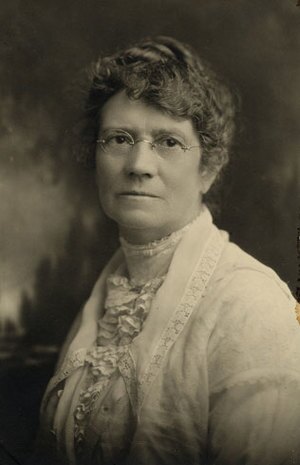
Image from MormonWiki
Conversion: Ruth May Fox’s parents joined the Church in Wiltshire, England when she was 5 months old. As a young girl, she made the trek to Utah with her family, where they settled in the Ogden area.
Marriage: Ruth married Jesse W. Fox Jr. when she was 19. They had 12 children.
Church Service: Ruth served for over 30 years in the presidency of the Young Ladies’ Mutual Improvement Association, which is equivalent to the Young Women program we have today. She was 75 years old when she accepted the call to serve as general president of the organization in 1925. Ruth is also known for penning the words to the invigorating hymn, “Carry On.”
Influence on Women’s Rights: Before her marriage, Ruth worked on a mill with her father in Ogden. Though she was working equipment that was intended to be run by men, she was paid less, which bothered her. “I should have had a man’s wages for this,” she said. “[My] father thought his partner would object since I was a girl. … I was given only $10 a week; but that was very good [wages] for a girl at the time” (Linda Thatcher, “‘I Care Nothing for Politics’: Ruth May Fox, Forgotten Suffragist,” Utah Historical Quarterly, Vol. 49, no. 3, 240).
Ruth became actively involved in the women’s suffrage movement and helped to draft the suffrage memorial that was presented and ratified at the 1895 state constitutional convention. She served as treasurer for the Utah Women Suffrage Association. As a writer and poet, she also led the Utah Women’s Press Club and Reaper’s Club, which promoted literary pursuits and opportunities for women.
Martha “Mattie” Hughes Cannon (1857–1932)
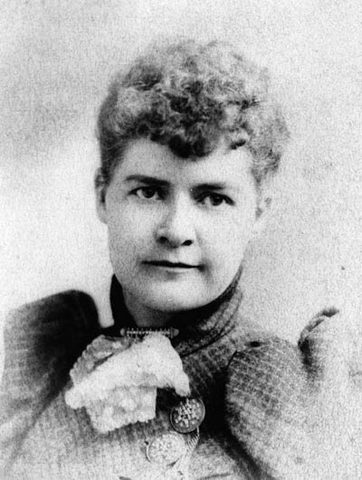
Image from ilovehistory.utah.gov
Conversion: Martha Hughes Cannon was just over 1 year old when her parents joined the Church in Wales. She crossed the ocean and the plains to come to Zion with her family when she was 3.
Education: In 1875, Mattie graduated from the University of Utah with a degree in chemistry and promptly began classes in medical school at the University of Michigan. By age 24, she was a full-fledged doctor. From there, she went on to pharmacology school at the University of Pennsylvania and graduated as the only woman in a class of 75 students.
Marriage: When Mattie was 29, she married Angus M. Cannon, who worked as superintendent of the hospital where Mattie worked. She was his fourth wife.
Influence on Women’s Rights: Mattie was actively involved in the women’s suffrage movement, and after speaking at the World’s Columbian Exposition in Chicago, the Chicago Record dubbed her “one of the brightest exponents of women’s causes in the U.S.” She played a key role in winning women’s suffrage in Utah in 1895.
But Mattie not only wanted to vote—she wanted to be part of the political action. She ran as a candidate for the senate in 1896 and won, becoming the first woman senator in the United States. Her husband, whose name was also listed on the ballot, had 3,000 votes less than she did. The New York Times reported that Mattie “showed her intense independence by declining to follow the political convictions of her husband, who [was] one of the staunchest Republicans in the state” (“Women Office Seekers,” The New York Times, November 1, 1896).
►You may also like: 8 Latter-day Saint women who made their mark on US politics
Susa Young Gates (1856–1933)
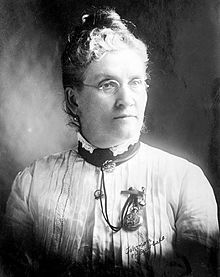
Image from Wikipedia
Conversion: Born as the daughter of President Brigham Young and Lucy Bigelow, Susa Young Gates grew up in the Lion House in Salt Lake City, Utah.
Marriage: When she was 16, Susa married Alma B. Dunford. Their marriage ended in divorce five years later, and she was remarried in 1880 to Jacob F. Gates.
Education: In 1878, Susa attended Brigham Young Academy in Provo, where she showed great promise in her musical ability. She began teaching voice lessons and was soon appointed as the head of the music department. She later served on the male-dominant academy board of regents as a trustee for 40 years.
Influence on Women’s Rights: Susa believed that the divine role of women extended far beyond society’s limitations. As she wrote in the Relief Society Magazine, “Woman’s sphere hitherto confined expressly within the four walls of her home, was now to be limited only by the confines of the Kingdom of God itself” (The Relief Society Magazine, Vol. VI, no. 3, 139).
As a women’s rights activist, Susa traveled as a representative to women’s congresses in Denver, Washington, D.C., and Toronto. She also traveled to speak in London and joined other delegates of the International Council of Women, including Susan B. Anthony, for tea with Queen Victoria.
Emmeline Blanche Wells (1828–1921)
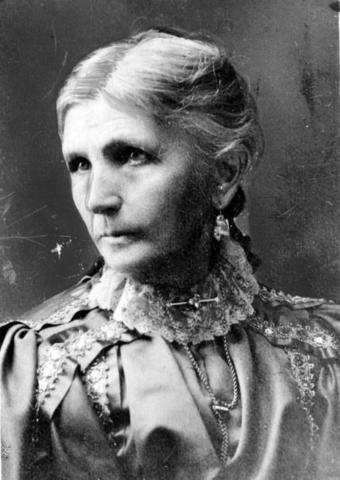
Image from Deseret News
Conversion: In spite of threats from local pastors and other town authorities, Emmeline Blanche Wells was baptized a member of the Church in Massachusetts when she was 15.
Marriage: While still in her teenage years, Emmeline married James Harvey Harris, who was also a recent convert to the Church. The young couple moved to be with the Saints in Nauvoo, but James left after the birth and death of their first child. Emmeline never saw him again.
She married her second husband, Newel K. Whitney, in 1845, but he passed away five years later. In 1852, Emmeline married Daniel H. Wells, and they raised three daughters together.
Church Service: For over 30 years, Emmeline served on the Relief Society general board. She organized a grain saving program in 1876, which successfully provided food for those in need during times of drought, natural disaster, and war. Over 200,000 bushels of wheat were sold to the U.S. government during World War I, and Emmeline was recognized by President Woodrow Wilson.
In 1910, Emmeline was called as the fifth general Relief Society president of the Church. She served faithfully as president for over ten years.
Influence on Women’s Rights: Emmeline became an early advocate of women’s rights and wrote several articles under the pen name “Blanch Beechwood” for the Woman’s Exponent. “I believe in women,” she wrote, “especially thinking women.” She was eventually appointed as the head editor of the Woman’s Exponent by President Brigham Young.
Emmeline served as a liaison between Latter-day Saint and non-Latter-day Saint women in the fight for suffrage and often handled conflict that arose due to criticism of polygamous practices. After women’s suffrage was restored, Emmeline ran for senator in 1896, the same year that Dr. Martha Hughes Cannon won.
►You may also like: 7 things Emma Smith wanted the women of the Church to know
Sarah Melissa Granger Kimball (1818–1898)
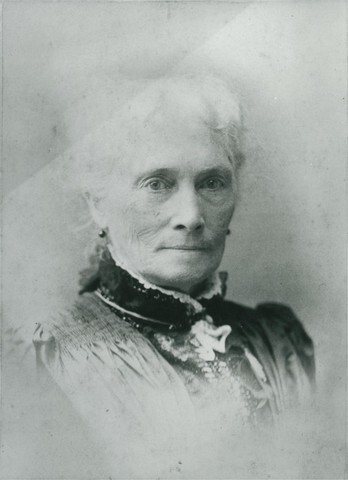
Image from Church Historian's Press
Conversion: Sarah Melissa Granger Kimball and her family learned of the Book of Mormon in New York soon after its publication. After her father received an incredible vision about the Book of Mormon’s veracity, their family joined the Church and remained fully grounded in the gospel for the rest of their lives.
Marriage: Sarah’s husband, Hiram Kimball, was a successful merchant in Nauvoo who joined the Church several years after their marriage. He was traveling to the Sandwich Islands to answer a mission call when he died unexpectedly, leaving Sarah behind to work as a teacher to support their family.
Church Service: Though Sarah never served as general president of the Relief Society, the idea for such an organization stemmed from her. The earliest beginnings of Relief Society started when Sarah began a sewing group with other women to begin sewing shirts for the men working on the Nauvoo Temple. She also spoke to the Prophet Joseph Smith about the need for the women of the Church to be organized. Her actions were a precursor to the revelation received in 1842 to establish the Relief Society, which is now the largest women’s organization in the world. She served as president of her ward’s Relief Society in Utah for over 40 years.
Influence on Women’s Rights: A personal friend of Susan B. Anthony, Sarah was active in the fight for women’s rights. She spoke in New York City, Washington D.C., and Europe and was known to be a woman with “courage to say what she thought” (Woman’s Exponent 20 [1 May 1892]: 159). She believed that women should not only be equal to men in the way of politics but also in esteem and education. She played a vital role in the inclusion of women’s suffrage in the Utah State Constitution and also served as president of the Utah Women’s Suffrage Association.
Louisa Barnes Pratt (1802–1880)
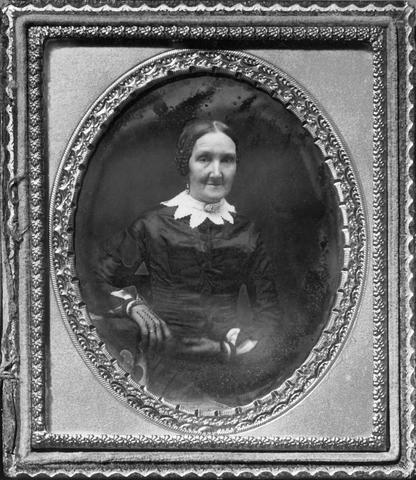
Image from BYU Religious Studies Center
Conversion: Though she had joined the Episcopal Church as a teenager, Louisa Barnes Pratt and her husband learned of the restoration of the gospel in 1838. They were baptized and moved to Nauvoo soon after.
Marriage: Louisa married Addison Pratt in 1831. Shortly after they arrived in Nauvoo, Addison was called on a mission in the Pacific islands, leaving her to move her family west on her own.
Church Service: Louisa was one of the first women to serve a mission in the early days of the Church. She and her husband were called to serve together in Tahiti. Before their departure, President Brigham Young set Louisa apart, blessing her with “power to rebuke the destroyer” and strength to “do a good work” in teaching the people there (History of Louisa Barnes Pratt, 108). Though Louisa saw many of these blessings fulfilled, their mission was cut short when French laws prohibited proselytizing on the island.
When they returned from their mission, Louisa and Addison settled in California. Brigham Young called the Saints in California to return to Utah, but Addison refused. Determined to follow the prophet, Louisa went without him and moved to Beaver, Utah.
Influence on Women’s Rights: It was in Beaver that Louisa became involved with the women’s suffrage movement. She wrote a dozen articles for the Woman’s Exponent and led a petition to Beaver’s territorial legislature to grant women the right to vote and run for office. Though she never lived to see suffrage restored to Utah, she helped lay the groundwork of a legacy that would bless thousands of Utah women in the years to come.
►You may also like: Latter-day Saint women giving blessings: Everything you need to know
Aurelia Spencer Rogers (1834–1922)
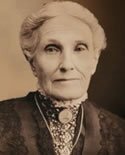
Image from lds.org
Conversion: Though her father was a Protestant minister at the time, he and the rest of Aurelia Spencer Rogers’s family joined the Church when she was 6 years old. Six years later, after her mother’s death and her father’s call to serve a mission, Aurelia and her older sister were left alone to care for their siblings as they crossed the plains.
Marriage: After reaching the Salt Lake Valley, 17-year-old Aurelia married Tom Rogers. They raised their family in Farmington, Utah.
Church Service: Aurelia is known for founding the Primary program of the Church. After seeing a group of rowdy boys in the streets, she was concerned for the rising generation and felt a need for a program that would help them stay out of trouble and develop important skills they needed for the future.
The First Presidency responded warmly to the suggestion, and approval was given to begin a Primary program for the young boys of the Church. Aurelia then asked if the girls could be included in the Primary program too. The leaders of the Church recognized this suggestion as inspiration from heaven, and President John Taylor gave his full approbation for both girls and boys to be involved. The first Primary meeting was held by Aurelia on August 25, 1878.
Influence on Women’s Rights: Aurelia served as one of three delegates representing Utah in the Women’s Suffrage Convention in Atlanta, Georgia. She also traveled to Washington, D.C., to attend the Second Triennial Congress of the National Council of Women.
Women of Character
In this book by Susan Easton Black and Mary Jane Woodger, we celebrate noble women in The Church of Jesus Christ of Latter-day Saints who have accomplished the extraordinary, leaving an indelible mark on history. These are stories about life, love, and a remarkable determination to do one's best—messages that reveal to the reader that neither happiness nor greatness is found in compromising self, but instead is found in reaching to a higher source. By reaching up, these women have reached out to make a valuable difference.


